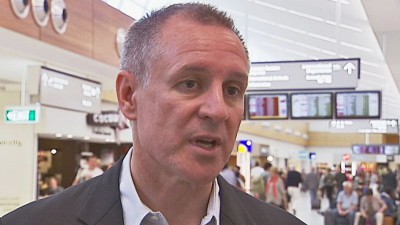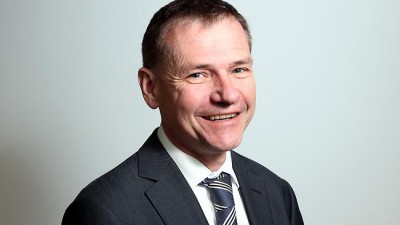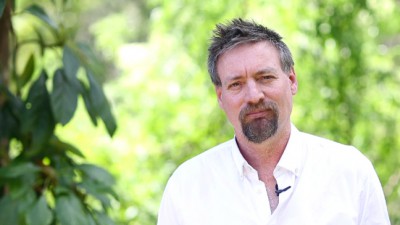
***
While the power pricing and supply calamity that is South Australia is down to the subsidies awarded to wind power under the Federal government’s Large-Scale RET, the state Labor government has done plenty to create the unfolding disaster and nothing to mitigate it.
It’s vapid Premier, Jay Weatherill must know that, as a wind power champion, he’s yesterday’s ‘hero’ and, as a so-called political leader, today’s fool.
Third world beckons as Weatherill plays the fool
The Australian
Nick Cater
14 February 2017
It would be wrong to give Mike Rann and Jay Weatherill all the credit for turning South Australia into wackadoodle windmill world. We should recognise the contribution of those who egged the premiers on, like Al Gore, auteur of An Inconvenient Truth. When it came to showing leadership on renewable energy, said Gore, South Australia was “one of best examples of any state in the entire world”.
Neither should we forget the public servants who gave the premiers frank and fearless advice that was utterly bonkers. A wind-powered economy, premier? What a courageous idea.
When governments are capable of errors of judgment on this scale it’s little wonder the public has grown weary of experts. We should not be surprised at this distrust of politicians who outsource vital decisions to mediocrities and act on sentiment rather than evidence.
Weatherill called his aggressive pursuit of renewable energy “a bit of an international experiment” in an interview 14 months ago. “We have got to take risks to show what the future of community looks like,” he said.
Last week The Advertiser dispatched a reporter to the Adelaide Hills to discover what “the future of community” might mean after three major blackouts in the past six months. “We’re nervous about buying bulk meat,” said one resident. “We lose our water … we can’t have a shower because we run on tanks.” The fish shop in Hahndorf has grown used to throwing out stock. “You hear about Third World countries having power cuts,” says owner John Stanley. “What are we?”
Coopers Cafe and Bistro would like to buy a generator, but after the losses it has suffered through power cuts it can’t afford one.
It’s bad enough to treat voters as crash-test dummies in a trial of dumb ideas; it is more infuriating when the intellectual lightweights who caused this mess refuse to accept responsibility. When 60,000 premises in his home state were plunged into darkness last week, Labor’s federal spokesman on climate change, Mark Butler, called it a “hiccup”. SA had been having “a very, very bad run” for several months, he told ABC Radio. “On each occasion it has had nothing to do with renewable energy.”
Nonsense. When the power shut down on Wednesday, demand was more than 3000MW, according to the Australian Energy Market Operator, yet the windmills were dribbling out less than 90MW. It is not called intermittent energy for nothing. Closing the coal-fired power stations in Port Augusta, which the government now wants to demolish, proved to be a foolish mistake.
Yet Weatherill adopts the posture of a victim, blaming everyone but himself. The only apology he’s made since last September’s power cuts was to LGBTQI community members “wronged by historical laws”. He is prepared to reform the Births, Deaths and Marriages Act to make it easier for South Australians to change their registered gender, but he refuses to revisit Labor’s renewable energy policy.
SA is being “shafted” because it’s at the end of the electricity network, he claims; none of this would have happened if the commonwealth had put a price on carbon; the outages are caused by network damage on the Victorian side of the Heywood interconnector; Malcolm Turnbull “must stand up to the right wing of his party and reject its pro-coal agenda, not take the low road of trashing renewables”.
Labor has been slow to realise its mistake in adopting vanity renewable energy targets but it is beginning to dawn. With a state election less than a month away, the West Australian Labor opposition has dropped a planned 50 per cent renewable energy target. Federal Labor would be wise to do the same, because things will only get tougher. Retail electricity prices have more than doubled in the past 10 years, and it is a reasonable assumption they will be higher still by the time of the 2019 election. The energy supply will be even less reliable, particularly in SA and Labor-held Victoria where the coal-fired Hazelwood power station is about to close.
Never mind saving the planet, Bill Shorten needs to save himself from a policy that will cruel his chances of winning the election as surely as the stench of a carbon tax did for his predecessor in 2013. It would be a mistake to imagine the Turnbull government will be any less relentless in highlighting the policy difference than Tony Abbott’s opposition. Josh Frydenberg, the first minister to be responsible for both environment and energy, quickly got the measure of Labor’s weakness and has been given licence by the Prime Minster to ride the issue hard.
Less than a fortnight after the blackout that shut down virtually the whole of SA last September, Turnbull used an address to a Minerals Council dinner to attack the “political claptrap” that had dominated the policy debate. Energy must not just be clean, it must be affordable and reliable. It is a technological and engineering challenge, not an ideological battleground.
Stepping beyond the rhetoric, however, presents some difficult challenges for the federal government, which finds itself fenced in by ill-designed policies — state and federal — that prevent the energy market operating efficiently. State-driven moratoriums on coal-seam gas extraction in NSW and Victoria have pushed an obvious source of low-emission back-up power out of the market. The demonisation of coal has been embraced by the Left, which no longer fights for productive jobs and has turned its back on progress.
The best way out of this renewable energy nightmare is to adopt a technology-neutral approach to energy supply and emissions reduction. Without the distortions of the RET the most efficient way to reduce emissions would be to reopen and retrofit existing coal-fired power stations, use gas for additional capacity, and start planning high-efficiency, low-emissions coal-fired power plants using ultra-supercritical technology.
Investors, however, will demand a level playing field, rather than one that slopes towards wind and solar. We should be cautious about calling for subsidies. Much better to undo the complicated idiocy that created this tangled market in the first place.
The Australian

***
Graham Lloyd unleashed with yet another stinging riposte to those who cling to the hope that the world can run on sunshine and breezes. What’s so refreshing about the following piece is that Graham goes it alone, rather than running drivel from John Connor from the ACF or wind industry spin doctors from the CEC, allowing his unassailable conclusion free rein.
RET scrapped after 2020 as Labor flip paves way for more gas
The Australian
Graham Lloyd
17 February 2017
The brutal reality of South Australia’s renewable energy policy failure has finally hit home to federal Labor, which has scrapped plans to extend the renewable energy target past 2020, opening the way for more gas.
The backtrack has been stage-managed over several days but for true renewables believers it is akin to Kevin Rudd’s dumping of the carbon trading scheme, which ultimately cost him his job.
Bill Shorten lit the fuse on Wednesday and opposition environment spokesman Mark Butler put the final bullet into the carcass of the post-2020 RET on ABC Radio yesterday.
Labor went to the federal election promising a 2030 RET target of 50 per cent, which has now become “aspirational” rather than fixed.
After 2020, under Labor, new wind and solar plants would not get special subsidies through a RET but would participate in an emissions intensity scheme, which research shows will favour gas.
As a result, the hodge-podge of ambitious state-based renewable energy targets now look hollow because the cash subsidy pipeline — the federal RET — has been crimped.
The Greens yesterday called it a “betrayal” and renewable energy spruikers accused Labor of throwing the industry “under a bus”.
The climbdown acknowledges the political chaos that has engulfed renewable energy policy since the statewide blackout in South Australia in September.
Despite the shrill protests of renewable energy enthusiasts, it is inescapable that the high penetration of intermittent wind energy in particular has forced more reliable sources — such as coal — out of the market, undermining energy security.
Much of this can be blamed on the RET, which has subsidised the addition of intermittent power generation into an already crowded electricity market.
When the wind blows, electricity is dumped at marginal rates into the grid with profits for windfarm operators mined from the RET. When the wind stops, the back-up coal has gone broke and gas generators can’t provide power because they have sold their scarce resources of gas elsewhere.
There are many market failings including lack of gas supplies, lack of trading capacity between states and old-fashioned energy market operating rules. Some argue South Australia’s woes are merely teething problems on the road to a decentralised electricity grid utopia.
But today the tyranny of intermittency is obvious. When power failed in South Australia last week, wind turbines were providing only 3 per cent of rising demand. This was a 90 per cent cut on wind generation earlier the same day.
This may one day be solved by more solar thermal plants and better batteries. And Labor insists the cost of wind and solar will be cost-competitive with gas and coal after 2020 without subsidy.
Wind industry supporters — who like to make the claim that renewables are cost-competitive — now say Labor’s retreat means the game is all but up.
The Australian


Reblogged this on Tallbloke's Talkshop and commented:
South Australia has found out the hard way that relying too much on wind turbines is bad news for everyone, including the politicians who ordered it.
We constantly hear that SA is operating on 40% of our needs from renewable energy, almost all from Wind.
Well what percentage was being provided in SA yesterday when the wind was like a very gentle breeze caressing the cheeks of Weatherill trying to sooth his pain.
No we did not get renewable energy from the grid from Victoria and NSW or even Tasmania either as they were producing even less with NSW at times producing nothing.
Today here in SA the wind is blowing strongly no doubt to the delight of Labor and the Greens, but not to the delight of our rural fire services who are on watch and ready to place themselves in the line of fire – literally.
Strong hot north winds are not a friend to rural people or those living in the Adelaide Hills, but they are much sought after by Labor and the Greens because they will bolster the energy being put out from their screeching, rotating monsters, ready for them to lie about how wonderfully SA is doing in the renewables energy stakes – on a percentage basis.
That should be the 20th when wind was absent across the board, but yesterday Victoria and NSW were struggling especially NSW with Nil production at times.
Amen Graham Lloyd.
The Clean Energy Council’s chief parrot Kane Thornton and the Federal Labor Govt are always frothing at the gills how renewables are the cheapest form of new generation.
The source of such information is always quoted from Bloomberg New Energy Finance. Pardon my cynicism but a company looking to finance renewable energy projects just might have a vested interest.
For what its worth I’d like to see the Bloomberg boys change a flat tyre on a car before I would trust them to set up the national grid.
I guess Kane comparing wind turbines to a coal fired generator is a bit like comparing your carbon fibre bike to my 500 horsepower John Deere tractor.
You have to ask which one is “fit for purpose.”
Deep down I think you know the answer, it might be time to start running like them other brave boys.
Reminds me of an analogy I once heard SoaG. Attempting to power the national grid using windmills is like a farmer attempting to plough his paddock by harnessing 3000 squabbling cats to his plough instead of of his well trusted pair of draught horses.
I thought SA state elections aren’t until March 2018, a year from now.
Yes, but that makes Labor’s annihilation inevitable. Power prices will continue to rocket and there will be plenty more blackouts.
Ok, I see the source of my confusion. There was mention of next month’s elections in WA, not SA, in one of the quoted articles.
The disaster in SA and developing in other states is a joint production by the federal and state governments. The fed’s stupid RET scheme provided the honey for parasite power but each state government has the power to refuse to allow them to be built in their state, or to require that any power producer must offer near nameplate output most of the time. In that case any parasite power proposal would have to come with its own backup facility which would of course be uneconomic.
There are two guilty parties here but the state governments are more guilty since ensuring reliable power is actually more a state responsibility than a national one under our constitution and a parade of dunces in state governments decided to ignore that.
But they all still have their pollies pensions, so they’ll no doubt manage to soldier on.